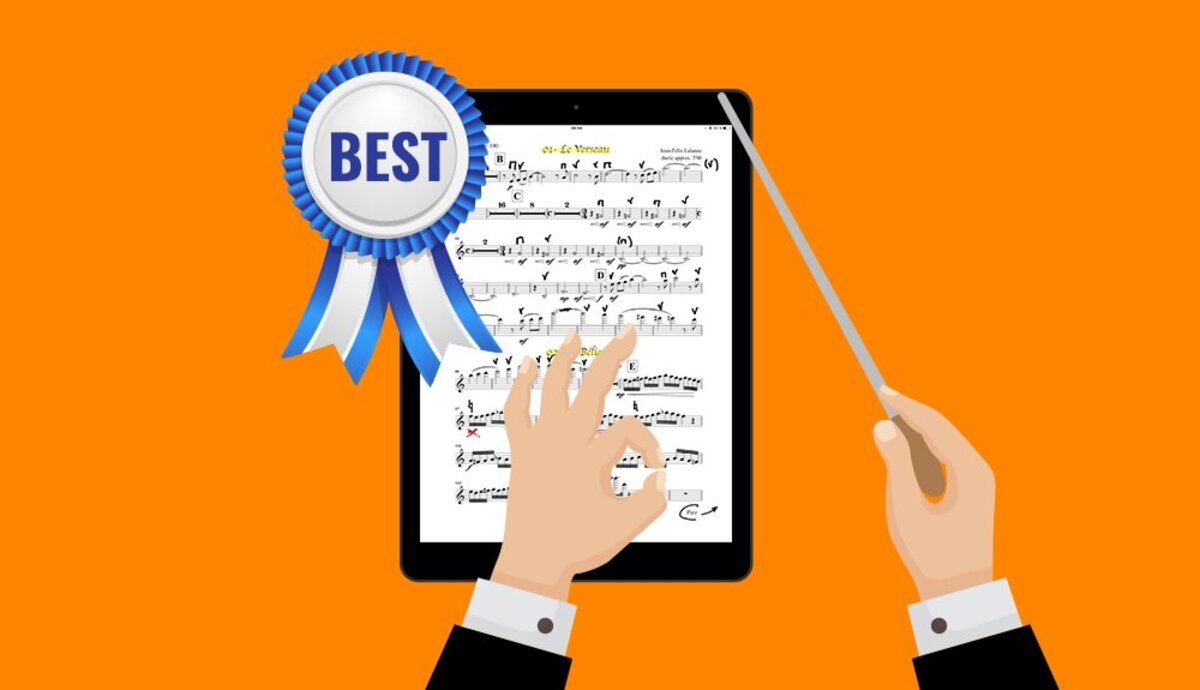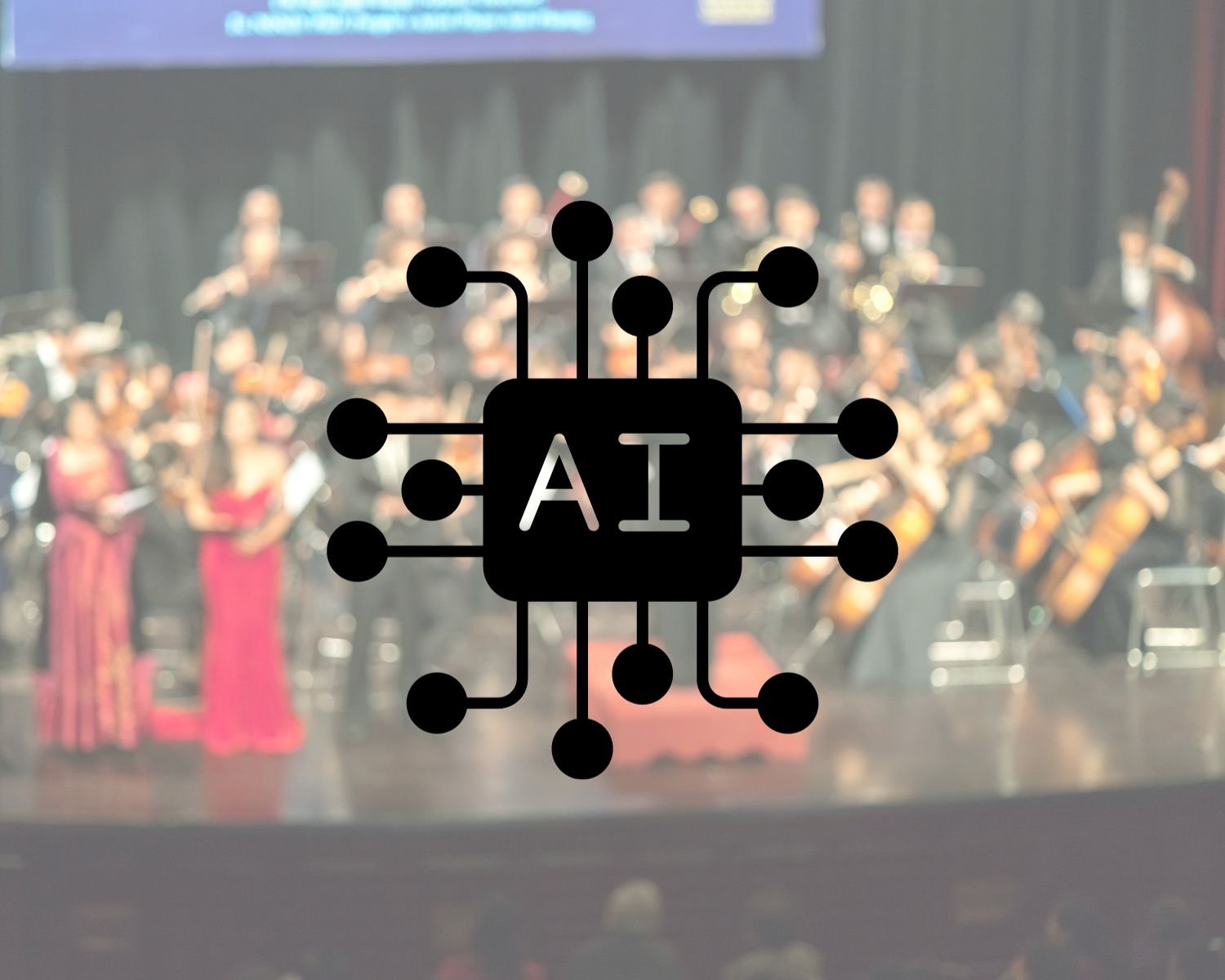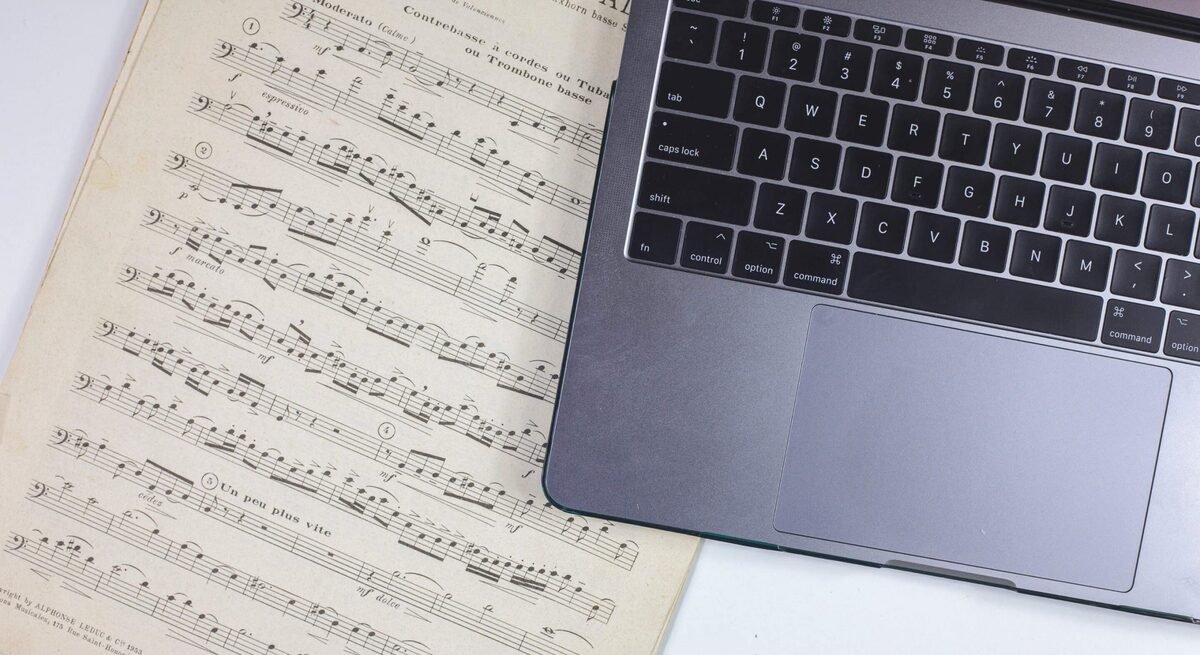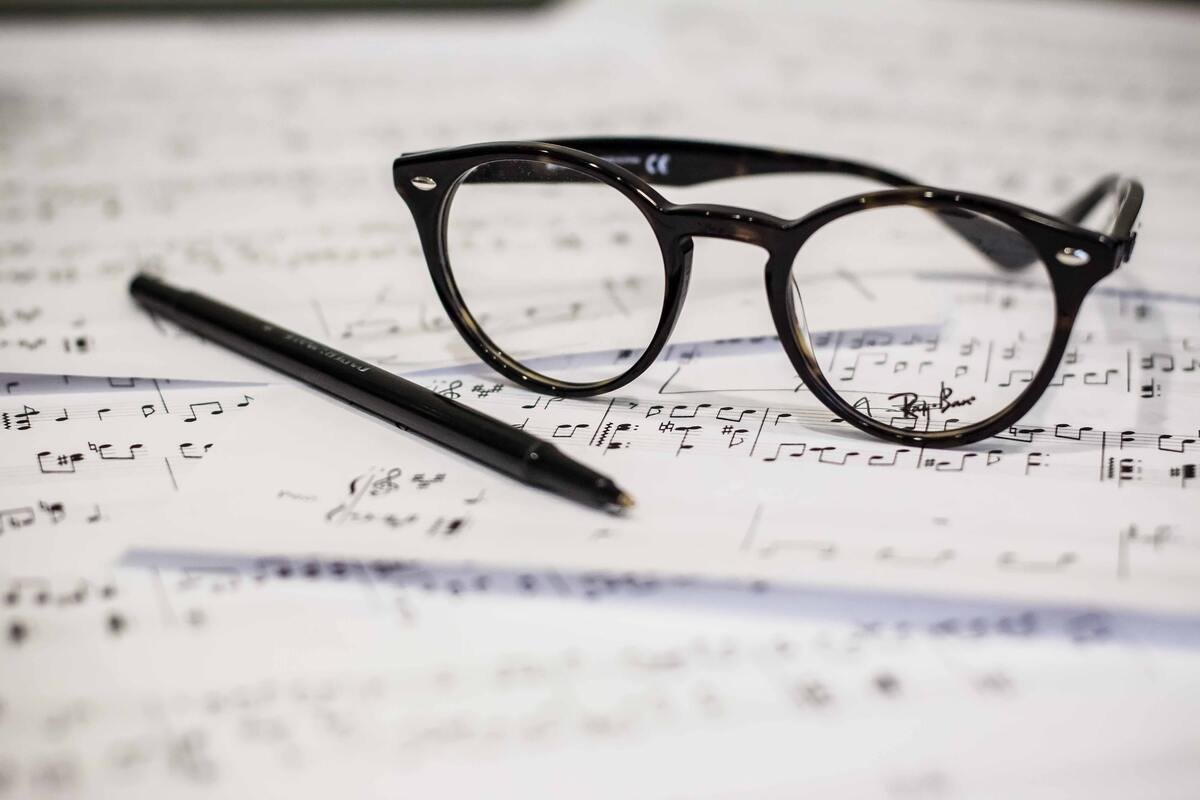The iPad Pro, the ideal tool for musicians
Music has always been at the heart of Apple's DNA. Over the years, the Cupertino-based tech giant has developed incredible software, such as Garage Band and Logic Pro, aimed at giving amateur and professional musicians alike the best tools to stimulate their creativity. Yet despite musicians' high expectations of the iPhone and iPad, no mobile device could match the performance of a laptop - until the arrival of the iPad Pro in 2015. L'iPad Pro is the first mobile device developed by Apple that fully meets the needs of musicians and, in our opinion, is the most powerful mobile music production device on the market. And here's why.
REASON #1: The device meets musicians' needs
Screen size
Size really does matter - and nowhere is this truer than when displaying digital sheet music. With a 12.9-inch screen, the iPad Pro is the best option available on the market for displaying a larger format than the standard A4 used by most musicians to print their scores. With a display capacity greater than that of a 16:9 laptop screen, musicians now have a screen large enough to display multiple staves simultaneously, in the case of a piano score for example, or even an orchestral score. What's more, the device is only 6.4 mm thick and weighs just 682g. The advantages of the iPad Pro are not limited to displaying scores: a larger screen also enables users to display multiple audio tracks in any digital audio workstation (DAW), such as GarageBand, Logic, Cubasis or FL Studio. This is a revolutionary new feature for pianists, who can finally play with two hands, since the iPad Pro screen can display up to three octaves, compared with just one octave (or one and a half) on the iPhone or an ordinary iPad.
Screen definition
The iPad Pro's Liquid Retina XDR display boasts a resolution of 2,732 x 2,048 pixels (264 PPP). Cutting-edge technologies such as ProMotion and True Tone give it a unique color precision, enabling all the fine details of a score to be clearly displayed without damaging the reader's eyes. What's more, the screen brightness adjusts automatically according to ambient light, making the iPad Pro the perfect solution for reading scores on stage, where lighting can sometimes complicate the reading of paper scores. Since iOS 13, there's also a dark mode for softening the iPad's backlighting on stage. Not to mention the challenge posed by outdoor concerts, where occasional gusts of wind can send score pages flying. Obviously, this is not a problem with the iPad Pro.
Autonomy
Battery life is a problem that all mobile devices, without exception, have to face - especially in the world of live music. Every musician's worst nightmare is to find themselves without a battery, and therefore without a score, in the middle of a concert. Apple's developers have responded to this challenge by announcing a battery life of over 10 hours for the iPad Pro. This means musicians can use their iPads, unplugged, to play any gig, even when using battery-hungry apps. iOS uses advanced power-saving technologies and takes full advantage of the iPad Pro's components. Android devices simply can't match the performance of their Apple counterparts, as Google's operating system needs to be compatible with many different components that are not developed in-house, so there's no guarantee that they will interact optimally. Apple, on the other hand, develops both components and software, thus ensuring perfect compatibility.
Storage space
The iPad Pro offers up to 2TB of storage capacity, more than most recent laptops. This gives musicians enough space to store their entire music library (between six and ten million pages, depending on file resolution) and audio tracks for future albums created with software such as GarageBand, Logic, Cubasis or FL Studio. And for even more space, users can subscribe to Apple's Cloud storage solution to expand their iPad's internal memory.
REASON #2: Optimized processes on multiple devices
One of the key benefits Apple offers musicians is a seamless user experience from one device to the next. In recent years, Apple has taken this interactive concept a step further by making its products even easier to use, so as not to interrupt musicians' creative process. With the latest iOS and macOS versions, users can now copy and paste from one device to another, transfer files (always from one device to another) using AirDrop or even create a shared folder using Files (formerly iCloud Drive), all with simple, intuitive shortcuts (pinch with three fingers to copy, for example).
For example, let's take a musician who composes his music using notation software such as Sibelius, Finale or Dorico. He can easily export his score in PDF format, or in MusicXML format, and then transfer it to his Sheet music reader (such as Newzik) on his iPad using AirDrop (much smoother and faster than sending it by e-mail). He can also compose his work directly on his iPad Pro using the Apple Pencil and a notation application such as Symphony Pro or Notion, and transfer it to his computer via AirDrop (to make a correction in Sibelius, for example) or open it directly in his digital score reader thanks to iOS's Split View function.
Apple also offers musicians the possibility of combining multiple audio interfaces thanks to iOS's Inter-App Audio function and the Audiobus application. These two programs enable users to route audio from one application to another to multiply creative combinations, for example by using a sequencer to control and record audio output on multiple applications. But this is just one example of the possibilities that this revolutionary technology now offers to any adventurous user.
The incredibly smooth process offered by Apple products explains why so many musicians around the world have chosen them as companions in their musical creation. And with the iPad Pro, Apple has once again proved that the tech giant remains dedicated to creating revolutionary tools for musicians.
REASON #3: Core Audio, Apple's optimized audio engine
When it comes to creating music on a digital platform, there are two main requirements: real-time, latency-free audio recording, and audio processing. In order to function properly, music creation software relies on powerful processors and optimized reception of audio and MIDI tracks. Core Audio is the iOS programming interface that handles the entire audio aspect of the iPad Pro (Core MIDI is the equivalent for the MIDI part). While many books could be written to explain how it works, we'll try to simplify things by summarizing the advantages it offers, particularly when compared with Android technology.
Core Audio has the advantage of being native to both iOS and OSX operating systems: iOS therefore benefits from a key component that has been developed, optimized and perfected over the years in the OSX environment. Using a native component also reduces the battery consumption of audio engines, optimizing their performance. Audio processing in Android, on the other hand, is handled by a separate library (or software group). This process consumes much more battery power and requires higher processing speeds to achieve Apple-like results. Overall, using a single audio processing method for all software and components helps prevent bugs and incompatibility concerns, especially if this method has been tested and improved over the years in a similar environment.
Artists in general, and musicians in particular, have always been a target audience for Apple; indeed, Core Audio technology is one of the main reasons why Apple computers are so popular with musicians and sound technicians. Apple outperforms its Android competition by offering a very low latency of less than 10 milliseconds (ms), which is perfectly suited to the needs of professionals, while Android generally limits itself to a latency of 10 to 20 ms on its most powerful devices, and to 200 ms on basic Android tablets. Although there are many Android tablet manufacturers, and each of them makes different decisions regarding the hardware components of their devices, all these products run on a single operating system that must be able to handle many different configurations. Clearly, this is far from ideal in terms of optimization. This is the main reason why Apple is the undisputed benchmark in terms of technological tools for musicians.
The 6th generation iPad Pro is equipped with an M2 processor featuring the 16-core Neural Engine: this may not make sense to you, but keep in mind that it enables the iPad to perform five trillion operations in one second. Above all, this means two things: smoother page-turning than ever before, and annotations without the slightest latency.
REASON #4: Compatible accessories and peripherals
Apple offers a unique experience of hardware and software integration, opening up an infinite range of possibilities for its creative users.
Thanks to Core Audio (and Core MIDI), iPad Pro users can connect their tablet to MIDI controllers and sound cards to multiply their technical capabilities. While the iPad Pro's internal microphone will suffice for on-the-fly recording (there are even microphones that plug directly into the iPad), professional recording will require a much more powerful sound card, such as the Apogee Jam. Users can also have fun sculpting their sound with amp simulations in GarageBand or AmpliTube by IK Multimediamaking the iPad Pro the lightest mobile studio on the market.
Pianists (or keyboardists) won't be disappointed either. Thanks to the extended touchscreen, which can display up to three octaves simultaneously, these musicians will now be able, for the very first time, to play with both hands while reading a digital sheet music on a mobile device. The new Force Touch function, similar to Aftertouch on modern keyboards, enables users to explore new possibilities and enrich their playing with compatible applications, such as Seaboard 5D developed by Roli.
Finally, a number of external keyboards are available on the market, very useful for anyone looking to control one of the many synthesizers on the Apple Store. The iPad Pro can also be connected to a MIDI controller thanks to the Core MIDI engine. In our opinion, Arturia's Keystep from Arturia is the most powerful option, but the iRig Keys by IK Multimedia is also a good choice. Both controllers can be powered by the iPad (via a USB camera connection kit). For users who need a wide range of MIDI options, there are a number of professional MIDI interfaces compatible with the iPad Pro.
The 6th-generation iPad Pro is equipped with a USB-C port, enabling it to converse with all our musical electronic devices: large screens, computers, synthesizers, MIDI interfaces... This latest-generation iPad Pro also comes with a magnetic Apple Pencil that never leaves the device, charges inductively (by being stuck magnetically to the side of the iPad) and enables impeccable handwriting.





